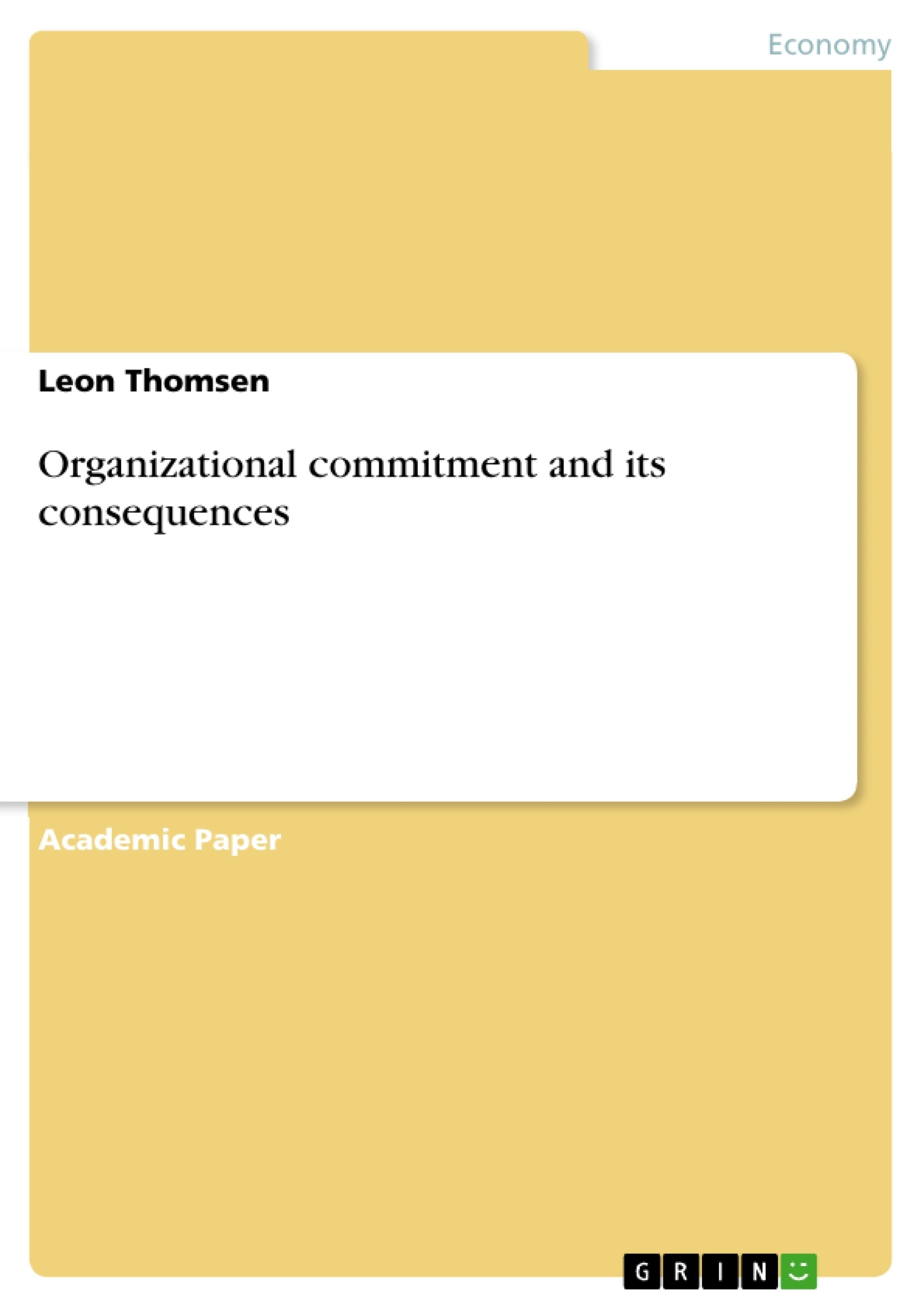Considering the demographic change, the organizational change, which among others is characterized by globalization as well as more flexible forms of employment, and the increasing importance of high professional qualifications, the preservation of employees, especially of executives and young talents, has become of enhanced relevance for organizations. In coherence with the preservation of employees, organizational commitment is highlighted in scientific research as the extent of identification of an employee with an organization and its consequences on his motivation and loyalty towards that organization.
Inhaltsverzeichnis (Table of Contents)
- Introduction
- Problem Definition and Objective
- Course of Investigation
- Derivation and Definition of Organizational Commitment
- Main Concepts of Organizational Commitment
- One-Dimensional Model
- Three-Component Model by Meyer & Allen
- Affective Commitment
- Continuance Commitment
- Normative Commitment
- Organizational Commitment and Employee Behavior
- Consequences of Organizational Commitment for Employee Behavior
- Organizational Commitment and Business Success
- Consequences of Organizational Commitment for Business Success
- Cost Saving through Reduced Fluctuation
- Long-Term Talent and Knowledge Management
- Assisting the Brand
- Assisting the Business Culture and Job Satisfaction
- Limitations
- Summary and Conclusion
- References
Zielsetzung und Themenschwerpunkte (Objectives and Key Themes)
This literature review aims to explore the concept of organizational commitment and its potential consequences for employee behavior and business success. The review focuses on the relationship between organizational commitment and employee loyalty, motivation, and performance, as well as its impact on key business outcomes such as cost savings, talent retention, brand image, and organizational culture.
- Definition and development of organizational commitment
- The Three-Component Model of Organizational Commitment
- The impact of organizational commitment on employee behavior
- The relationship between organizational commitment and business success
- Limitations and future research directions
Zusammenfassung der Kapitel (Chapter Summaries)
The introduction sets the stage for the review by defining the problem and outlining the objectives of the study. It highlights the increasing importance of employee retention in today's dynamic business environment and introduces organizational commitment as a key factor influencing employee loyalty and motivation.
Chapter 2 delves into the derivation and definition of organizational commitment, tracing its roots in sociology and social psychology and examining its evolution within the field of organizational psychology. The chapter explores various interpretations of the term "commitment" and presents the seminal definition of organizational commitment by Mowday, Porter, and Steers.
Chapter 3 presents the two main models of organizational commitment: the one-dimensional model and the three-component model (TCM) by Meyer & Allen. The one-dimensional model is discussed in terms of its behavioral and attitudinal perspectives, while the TCM is introduced as a more comprehensive and empirically validated framework. The chapter provides detailed explanations of the three components of the TCM: affective commitment, continuance commitment, and normative commitment.
Chapter 4 examines the link between organizational commitment and employee behavior, exploring the consequences of commitment for various aspects of employee performance, including job satisfaction, absenteeism, and turnover. The chapter draws on empirical research to demonstrate the positive impact of organizational commitment on employee behavior.
Chapter 5 explores the relationship between organizational commitment and business success, focusing on the economic consequences of commitment for organizations. The chapter discusses how organizational commitment can contribute to cost savings through reduced employee turnover, facilitate long-term talent and knowledge management, enhance brand image, and foster a positive organizational culture.
Schlüsselwörter (Keywords)
The keywords and focus themes of this text include organizational commitment, employee behavior, business success, employee retention, talent management, brand image, organizational culture, affective commitment, continuance commitment, normative commitment, and the Three-Component Model of Organizational Commitment.
- Citation du texte
- Leon Thomsen (Auteur), 2013, Organizational commitment and its consequences, Munich, GRIN Verlag, https://www.grin.com/document/281668
-

-

-

-
Téléchargez vos propres textes! Gagnez de l'argent et un iPhone X. -

-
Téléchargez vos propres textes! Gagnez de l'argent et un iPhone X. -

-
Téléchargez vos propres textes! Gagnez de l'argent et un iPhone X. -

-
Téléchargez vos propres textes! Gagnez de l'argent et un iPhone X. -

-
Téléchargez vos propres textes! Gagnez de l'argent et un iPhone X. -

-
Téléchargez vos propres textes! Gagnez de l'argent et un iPhone X. -

-
Téléchargez vos propres textes! Gagnez de l'argent et un iPhone X.

